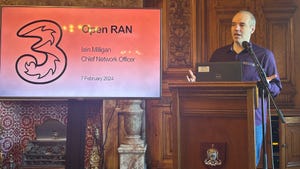
Patent house Intellectual Ventures Management LLC (IV) is spinning off satellite antenna maker Kymeta after securing a $12 million round in funding from a group that includes Microsoft Corp. (Nasdaq: MSFT) Chairman Bill Gates.
Kymeta plans to use the funds to "simplify the satellite connection needed for broadband Internet on the go, anywhere in the world," it said in an announcement Tuesday afternoon. Other backers include international cable operator Liberty Global Inc. (Nasdaq: LBTY) and Lux Capital.
Kymeta plans to achieve its lofty goal by commercializing IV's Metamaterials Satellite Antenna Technology (MSA-T). MSA-T is an artificial material engineered to manipulate electromagnetic radiation, meaning that Kymeta's "mTenna" can point and steer radio signals toward a satellite to connect a mobile device to broadband. The companies say that this approach is thinner, lighter, more efficient and less expensive than traditional antenna technology. The company expects to have the first product commercially available by 2015. Kymeta is the second company to spin out from IV, which has been criticized for using its patent trove for the basis of lawsuits rather than for new product innovation. Its first spinoff was nuclear power startup TerraPower.
Why this matters
If it works, Kymeta's technology could help to bring affordable broadband to areas that lack access to high-speed connections, and help to meet a goal of the U.S. National Broadband Plan. And, if metamaterials can help eliminate interference concerns for mobile broadband via satellite, the spinoff could be on to something big. That's the kind of issue that's kept LightSquared , which wanted to build out an Long Term Evolution (LTE) network in satellite spectrum, from getting off the ground.
For Liberty Global, Kymeta's technology could come in handy to bring high-speed Internet services where its Docsis networks don't reach, and possibly set it up for offering broadband services outside its traditional cable footprints.
IV says that the satellite antenna technology Kymeta is using is just the tip of the iceberg for the application of metamaterials. The company is plotting mobile apps for the aerospace, transportation and maritime industries, and plans to develop portable satellite hot spots for individual users, such as field reporters, emergency responders and customers in remote areas.
For more
LightSquared Names Doug Smith as CEO
WiSpry Claims Antenna Tuner Key to Global 4G
Antenova Intros Global LTE Antenna Design
AT&T to Buy NextWave for 'Alternative' 4G
LightSquared Files for Chapter 11
— Sarah Reedy, Senior Reporter, Light Reading Mobile
About the Author(s)
You May Also Like












